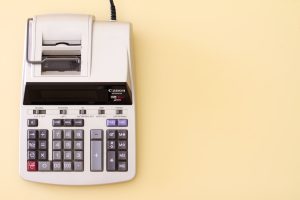Navigating Global Markets: How to Adjust Your Trading Times for Forex
The foreign exchange market, or Forex, is the largest financial market in the world. It’s a decentralized platform where traders can buy and sell currencies from all over the globe. With a daily trading volume of over $5 trillion, the Forex market is highly volatile and constantly changing. As a result, it’s essential to understand how to navigate global markets and adjust your trading times to maximize your profits.
The Forex market operates 24 hours a day, five days a week. This means that traders can participate in the market at any time of the day or night. However, not all trading times are created equal. The Forex market is divided into four major trading sessions: the Sydney session, the Tokyo session, the London session, and the New York session.
Each trading session has its own unique characteristics, and traders need to understand the nuances of each session to be able to make informed trading decisions. Let’s take a closer look at each session and what you need to know to adjust your trading times for Forex.
Sydney Session
The Sydney session starts at 10 pm GMT and ends at 7 am GMT. This session is known for its low volatility, as it’s the first trading session of the week. During this session, the Australian and New Zealand markets are open, but the liquidity is low. As a result, traders should be cautious and focus on currency pairs that are related to the Australian and New Zealand dollars.
Tokyo Session
The Tokyo session starts at midnight GMT and ends at 9 am GMT. This session is known for its high volatility, as it overlaps with the Sydney session and the London session. During this session, the Japanese market is open, and it’s the busiest trading session in Asia. Traders should focus on the Japanese yen and currency pairs that involve the yen.
London Session
The London session starts at 8 am GMT and ends at 5 pm GMT. This session is known for its high volatility, as it overlaps with the Tokyo session and the New York session. During this session, the European markets are open, and it’s the busiest trading session in the world. Traders should focus on the euro, the British pound, and currency pairs that involve these currencies.
New York Session
The New York session starts at 1 pm GMT and ends at 10 pm GMT. This session is known for its high volatility, as it overlaps with the London session. During this session, the US market is open, and it’s the busiest trading session in the world. Traders should focus on the US dollar and currency pairs that involve the dollar.
Adjusting Your Trading Times for Forex
Now that you understand the characteristics of each trading session, it’s essential to adjust your trading times to maximize your profits. Here are some tips to help you navigate global markets and adjust your trading times for Forex:
1. Identify your trading style – Are you a day trader or a swing trader? Do you prefer to trade during high volatility or low volatility? Understanding your trading style will help you determine the best trading times for Forex.
2. Focus on currency pairs that are related to the trading session – During the Sydney session, focus on currency pairs that involve the Australian and New Zealand dollars. During the Tokyo session, focus on currency pairs that involve the yen. During the London session, focus on the euro and the British pound. During the New York session, focus on the US dollar.
3. Use a Forex calendar – A Forex calendar will help you keep track of important economic events and news releases that can impact the market. Use the calendar to identify the best trading times for Forex.
4. Avoid trading during low liquidity – During the Sydney session, liquidity is low, so traders should be cautious. Avoid trading during holidays or when major financial centers are closed.
5. Consider time zone differences – Forex trading times are based on GMT, so it’s important to consider time zone differences. Traders should adjust their trading times to their local time zone to avoid confusion.
Conclusion
Navigating global markets and adjusting your trading times for Forex can be challenging, but it’s essential to maximize your profits. Understanding the characteristics of each trading session and focusing on currency pairs that are related to the session will help you make informed trading decisions. Use a Forex calendar, avoid trading during low liquidity, and consider time zone differences to ensure that you’re trading at the best times for Forex.





